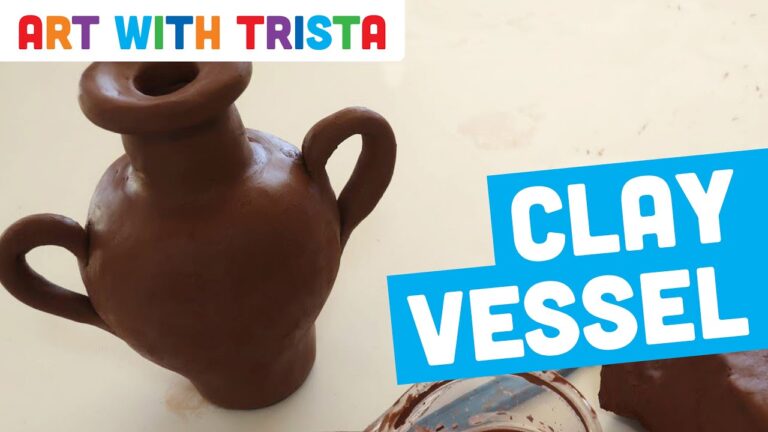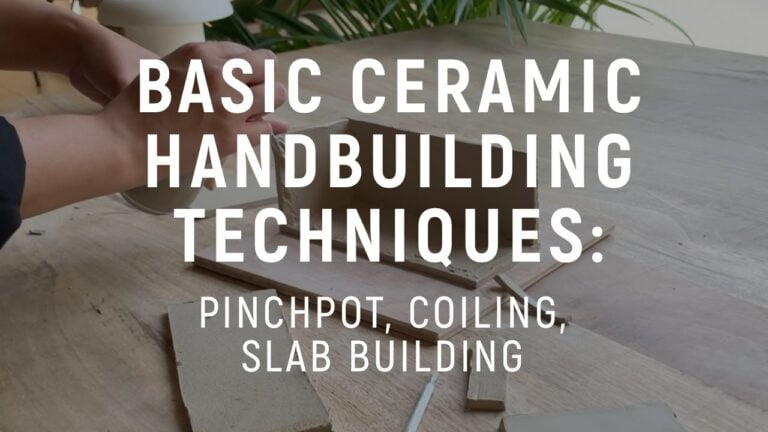In the world of pottery, clay vessel designs stand out for their timeless beauty and intricate craftsmanship. From traditional to contemporary styles, these vessels evoke a sense of artistry and cultural heritage. Explore the fascinating world of clay vessel designs as we delve into the history, techniques, and trends shaping this ancient art form. Join us on a journey of discovery and appreciation for the exquisite creations that continue to captivate art lovers worldwide.
- Use of natural colors and textures in clay vessel designs
- Incorporation of traditional and modern patterns in clay vessel designs
What is the process for making a clay vessel?
To make a clay vessel, start by placing the ball of clay in your left hand. Then, insert your right thumb into the center of the sphere, stopping about ½” from the bottom. Gradually widen the thumb hole by turning the sphere and pinching the sides. Remember to smooth the walls and reshape the pot as needed throughout the process.
As you continue to work on the clay vessel, be sure to maintain a steady pace and consistent pressure. By continuously turning the sphere and pinching the sides, you can create a smooth and even shape for your pot. Don’t forget to periodically smooth the walls to ensure a polished finish.
With practice and patience, you can master the art of making clay vessels. By following these steps and refining your technique, you can create beautiful and functional pottery pieces. Remember to enjoy the process and let your creativity shine through in each unique creation.
What is the purpose of a clay vessel?
Clay vessels are versatile containers that can be used for a variety of culinary purposes. They can be glazed or unglazed, with different shapes and sizes to suit different cooking needs. These vessels are particularly well-suited for making soups, stews, and cooking rice due to their ability to evenly distribute heat and retain moisture.
The porous nature of clay vessels allows for slow and even cooking, making them ideal for simmering hearty dishes like soups and stews. The natural insulation properties of clay help to maintain a consistent temperature throughout the cooking process, resulting in tender and flavorful meals. Additionally, the traditional design of clay pots adds a rustic charm to the dining table, enhancing the overall dining experience.
In conclusion, clay vessels are essential kitchen tools that excel in cooking a wide range of dishes. Their unique properties make them particularly well-suited for preparing soups, stews, and rice dishes. Whether glazed or unglazed, deep or squat, clay pots provide a reliable and traditional method of cooking that enhances the flavor and texture of your favorite recipes.
What is the name of a container made of clay?
Pottery, the art of creating objects from clay and hardening them with heat, has been practiced for centuries. The versatile nature of pottery allows for the creation of a variety of useful items, such as vessels for holding liquids or plates and bowls for serving food. This ancient craft is not only practical but also serves as a form of decorative art, with intricate designs and patterns often adorning the finished pieces.
The term “pottery” refers to the process of creating objects from clay and firing them to harden the material. This ancient art form has been used to create a wide range of useful items, including containers for holding liquids and serving ware for food. The beauty of pottery lies in its ability to be both functional and decorative, with skilled artisans often adding intricate designs and patterns to their creations. Pottery is a timeless art form that continues to be cherished and practiced around the world.
Unveiling the Future of Clay Vessels
The future of clay vessels is here, and it’s more innovative than ever before. Traditional clay pots and jars are being reimagined and redesigned to meet the needs of modern consumers. From sleek, minimalist designs to multifunctional features, the future of clay vessels is all about blending tradition with innovation.
One of the most exciting developments in the world of clay vessels is the integration of smart technology. Imagine a clay pot that can regulate its own temperature, or a clay jar that can notify you when its contents are running low. These advancements not only make clay vessels more convenient to use, but also open up a world of new possibilities for how they can be incorporated into our daily lives.
The future of clay vessels is bright, with endless potential for creative and functional designs. Whether it’s a self-watering clay planter for urban dwellers or a beautifully crafted clay water filter for sustainable living, the possibilities are endless. As we continue to push the boundaries of what is possible with clay, we can look forward to a future where these timeless vessels play a central role in our homes and daily routines.
The Art of Modern Clay Pottery
Step into the world of modern clay pottery, where traditional techniques meet contemporary design. Each piece is meticulously crafted by hand, showcasing the skill and artistry of the potter. From sleek vases to intricate sculptures, every creation tells a unique story through the medium of clay.
Discover the beauty and versatility of clay as it is transformed into stunning works of art. The tactile nature of pottery invites you to connect with the artist’s vision, feeling the texture and form of each piece. Whether you’re drawn to minimalist design or bold, abstract shapes, modern clay pottery offers a diverse range of styles to suit every taste.
Embrace the timeless appeal of clay pottery in your home or workspace, adding a touch of elegance and creativity to your decor. A handcrafted clay piece not only serves as a functional object but also as a statement of individuality and craftsmanship. Experience the art of modern clay pottery and bring a touch of artistry into your everyday life.
In summary, the intricate and timeless beauty of clay vessel designs continues to captivate and inspire. From ancient civilizations to modern artisans, the art of shaping clay into functional and decorative vessels remains a testament to human creativity and ingenuity. As we appreciate and preserve these cultural treasures, we also honor the traditions and craftsmanship of those who came before us. The enduring appeal of clay vessel designs serves as a reminder of the profound connection between art, history, and humanity.



